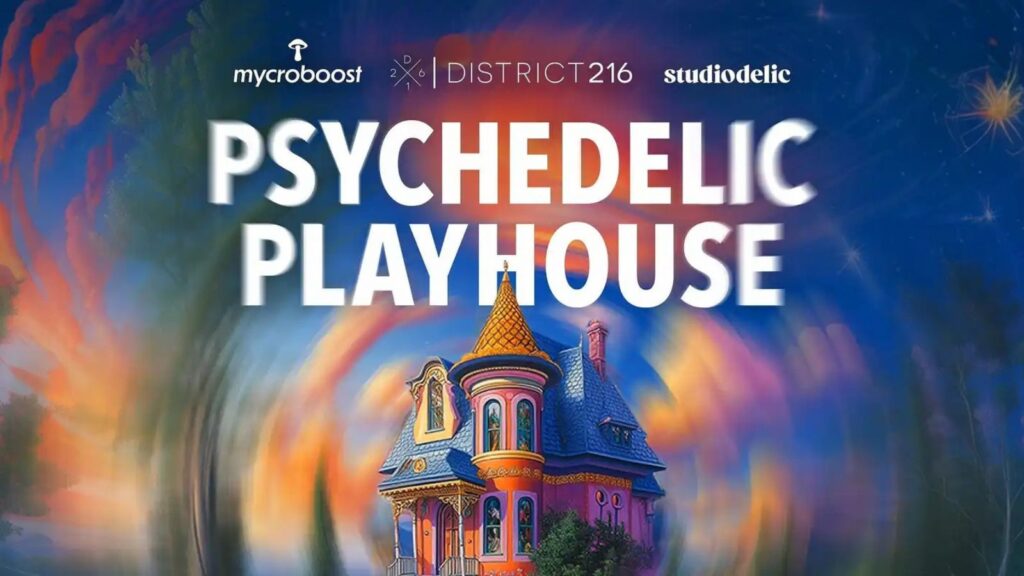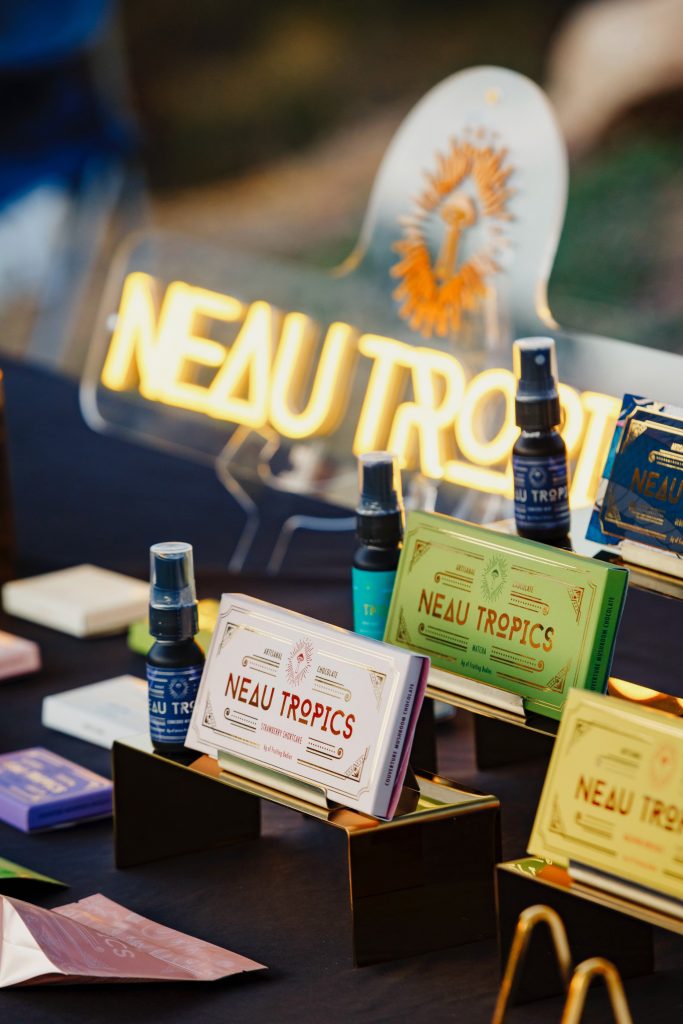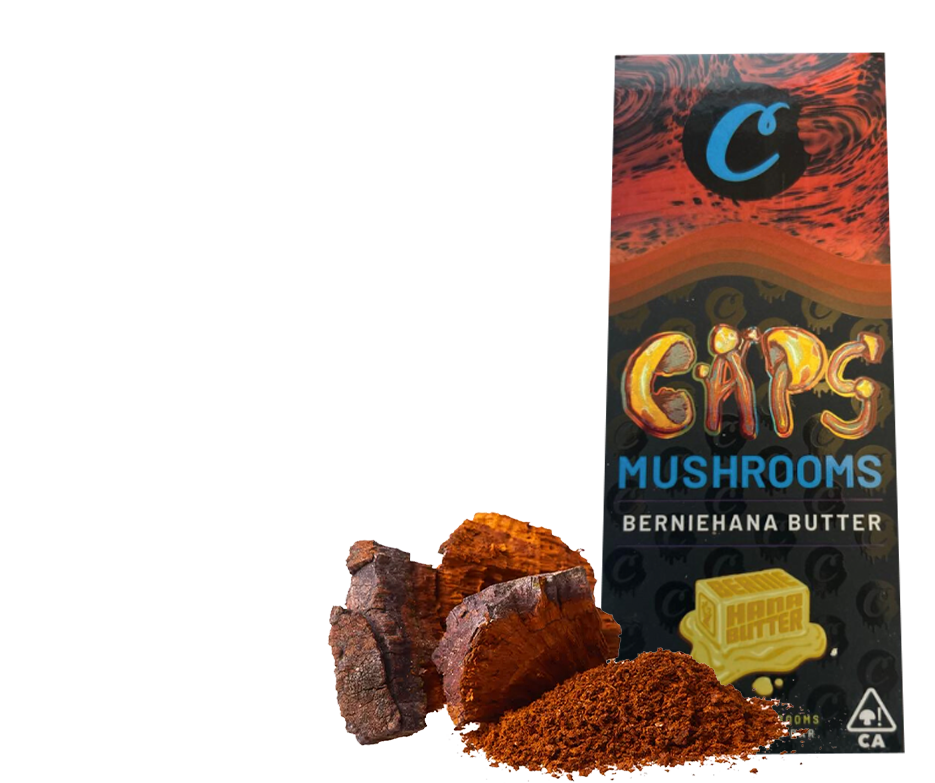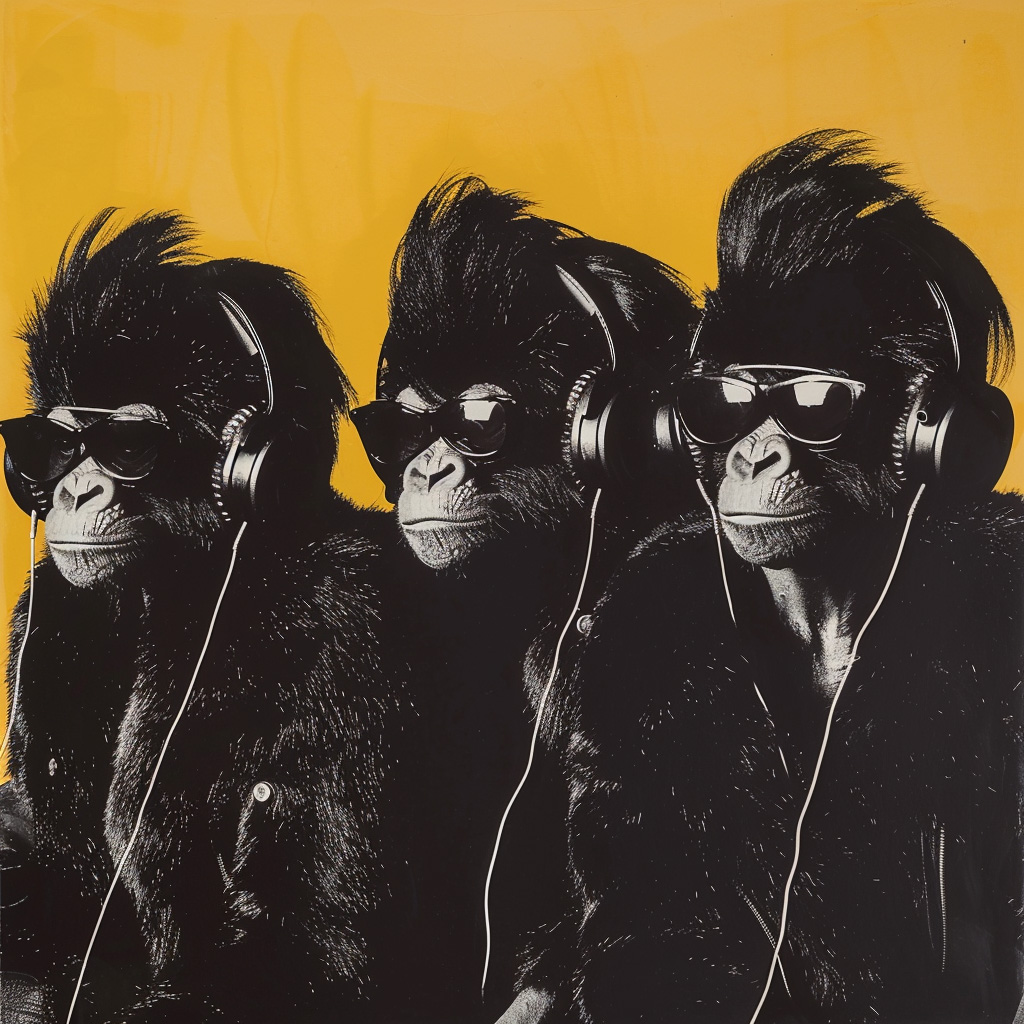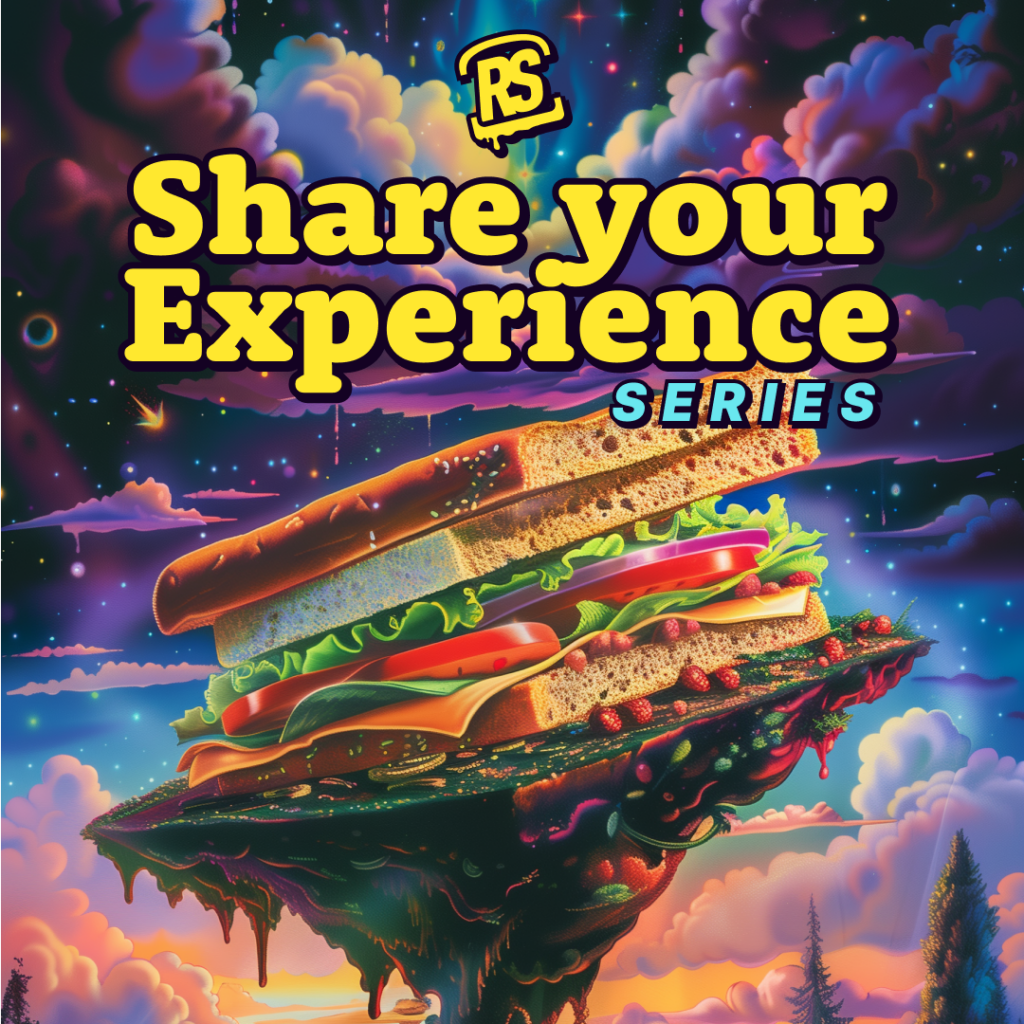All the music you will ever need appeared in three boxed sets of LPs in 1952, produced by Harry Smith and published as The Anthology of American Folk Music by Folkways Records. This set of recordings was an important documentary impetus for the folk music revival of the 1950s, and through that movement played a role in the larger cultural phenomenon that we call “the sixties.”
In 1991, the Grammy Foundation gave Harry Smith an award in recognition of his contribution to American music. Harry’s acceptance speech was brief. He said, “I’m glad to say my dreams came true, that I saw America changed by music.”
Here’s Harry accepting his award.
The award recognizes Harry’s work as what academics used to call a “musical folklorist.” But Harry was also a painter, designer, scholar of the occult, and ground-breaking filmmaker. That’s the conventional resume. I considered him to be a magician and an important composer of a type of music akin to, but more advanced than that of the great modernist genius John Cage.
Right up front, I have to say that Harry’s story is more of a legend, some of it quite fantastical, and it’s impossible to separate the facts from the myths. So don’t bother wondering if what follows is all real. Just enjoy the tale, if you will. Some of what follows comes from the testimony of reliable scholars, some comes from friends of Harry, some of it I got from Harry himself during our many hours of conversation. Some of it comes from semi-speculative biographical materials.
Harry Everett Smith was born in Portland Oregon in 1923, and grew up in Bellingham Washington. Early in the deal, his parents separated, in a way. Harry told me that Bellingham was a canning town, but by the ’30s the salmon had all been fished out, so the canneries were done and a lot of people had moved on. His parents had separate homes, he said, at either end of a block of abandoned houses.
Harry sometimes claimed to be the son of Aleister Crowley, the English occultist. He said his mother had been walking on the beach at dawn when along came Crowley, jogging naked. Harry hinted that he was the fruit of that meeting. I don’t know if he believed it himself. But he did once show me a letter from Crowley. The other thing he said about his mother was that she claimed she was Anastasia Romanov. In the mid-twentieth century, occasionally someone would turn up claiming to be the lost daughter of the last Czar of Russia, the little girl who was, the story goes, spared execution by Bolshevik assassins and sent to America. I don’t know how seriously Harry took this, but the dates at least seem workable. Anastasia would have been 22 the year Harry was born.
Harry’s great grandfather was a Civil War general who had introduced the Scottish Rite of the Masons to the Northwest. The family was much involved in the occult, and were Theosophists. Harry said that on one of his birthdays, his father had given him a blacksmith shop and told him to turn lead into gold. He also told me that as a small child, his habitual costume was that of a Mandarin.
Bellingham is in the middle of Northwest Indian territory, and Harry said that one day, one of his elementary school classmates had described seeing a dance where a skull was swung on the end of rope. This intrigued Harry. He knew that the last stop on the school bus was the reservation, so he stayed on the bus. By the time he was in high school, he was recording the songs of Lummi elders, and was writing a grammar of their language.
He wound up at the University of Washington in Seattle (one of the major US anthropology schools), with a teaching assistantship in Inuit language. (He seems to have had a gift for languages. He claimed to know Kwakiutl and to be an expert in Plains Indian sign language. I have no reason to doubt him. At one point, I walked into the kitchen we shared to find him conversing with a visitor in Swahili.)
One weekend, he accepted the invitation of a group of his college friends to join them for a visit to San Francisco. They wound up at a union hall where there was a concert. There Harry met Woody Guthrie. It was the occasion of Harry’s first taste of marijuana. He never went back to college.
At some point, Harry got a job as secretary or assistant to a professor at Berkeley. This gave him access to the professor’s library. At the same time, he collected books and records. Eventually, his collections would also include Seminole Indian textiles, Ukrainian Easter eggs, paper airplanes, tape recordings, and string figures. Harry told me that he collected the Easter eggs because they bore “a ten thousand-year-old language.”
I’ll say more about the collections later.
During the Second World War, he got a job in an airplane factory. His job was to install machine guns (some sources say bomb sights, maybe it was both) in aircraft. There was plenty of overtime, and he accumulated a wad of cash, which he undoubtedly spent on his collections. This was a lifelong habit. As far as I know, the war work was the last steady job he ever had.
He found out that some of the warehouses out by the airbase were storing thousands of old 78 recordings. They were going to be melted down for the lacquer, which probably has some use in weapons production. He was able to purchase these in bulk.
He rented the upper floor of a building in the Fillmore, the black neighborhood in San Francisco. On the ground floor was an after-hours club where jazz musicians went to jam late at night. He apparently chose this place so he could study the music. Cheap rent was probably also a factor. There he set up a painting studio, and proceeded to make a series of abstract paintings he called “transcriptions” of the music he was hearing from the bar downstairs. He eventually made transcription canvases of Dizzy Gillespie, Charlie Parker, and Thelonious Monk.
Transcription of Dizzy Gillespie’s “Manteca” by Harry Smith
Allen Ginsberg told me he first met Harry at a jazz club in Greenwich Village. Harry was sitting next to Thelonious Monk’s piano, drawing. Allen asked him what he was doing and he said he was transcribing the music.
Harry made abstract films based on the rhythms of music coordinated to particular numerical values of the Kabbalah, which, he told me, related to the ratio between respiration and heart beat when one is at rest, but alert. These movies he projected onto live jazz musicians. Years later, I asked a student of mine, Sue Salinger, to investigate these numbers. She said they stand for “Loving Kindness,” which is the creative impulse of all existence. She said that Psalm 72, line 13, outlines the path of Loving Kindness.
Harry also made animated movies using figures cut out from old Sears catalogs. One such, “Heaven and Earth Magic,” portrays a lady’s visit to the dentist. There she is given nitrous oxide and undergoes a surreal, visionary experience.
He began painting directly on film stock, and was the first US film maker to do so. Some of his “Early Abstractions” look like animated Kandinsky or Suprematist paintings. They are extremely complex and entirely enthralling. The technique employs a kind of stencil. Mutating geometric figures are achieved by spraying colored inks off a toothbrush onto a frame of film stock partially covered with adhesive tape. Then the tape is removed, revealing the geometrical forms created by the masking. Here’s a piece from the Early Abstractions of the late 1940s. Some of the round shapes were achieved by using the rubber stopper from an ink bottle as a kind of stamp. Here’s a piece from Part 4 of the series. This employs stop-action photography of paper cut outs. The quality of the visual is of course very poor in this format. When it is projected as film, as you might imagine, the effect is beautiful.
It is also important to note that the music on these video clips is not the music Harry originally used for the showings of these films. The present music was added decades later by Mystic Fire, the company that now sells the video versions. They commissioned new music for the films, presumably because Harry never bothered to get the rights for the soundtrack he used at his showings. He told me the films were designed to play with the best available popular music of whatever time they were being shown. When he was showing these things in the mid-60s, it was the Beatles. I have also seen him project them with old recordings of Enrico Caruso, and with jug band music from the 1930s. He encouraged people to try it with various types of music. He said with really good music, there would be remarkable coincidences between the music and image about a third of the time. He once asked me what it would cost to publish my band’s music with the films. I was flattered, of course.
One of the movies is a paper cut-out animation of a classical Indian (South Asian) dancer. I showed the film to a woman who was a practitioner of the style. She said the dance moves Harry’s paper doll portrayed, including the mudras (hand positions), were entirely accurate.
Again, most of what I have said so far is patched together from various sources, including the man himself. The details, and even some of the larger threads, may be way off. But this is a legend, a myth, right? As Claude Levi-Strauss has noted, there is no one “correct” version of a myth, it’s the message that counts.
Here’s some music history relevant to the case. Edison’s recording phonograph, invented in 1877, could only play a couple of minutes of sound per cylinder. In 1888, Emile Berliner produced the gramophone disc, which made it possible to market longer recordings to the general public. Folk music had been recorded since the earliest days of Edison’s technology, but it took off as a popular phenomenon just after World War I. The boom came like so:
Ralph Peer of Okeh records was traveling in the south, and he was asked by a shop keeper in Atlanta to produce a thousand discs of a local carnival barker, Fiddling John Carson. Peer thought the music was awful, but he delivered on the deal. Within a day, the shop keeper ordered more copies. Eventually the record sold half a million. Peer went on to record many folk artists, white and black. He invented the terms “Hillbilly” records and “Race” records to market his product. These terms became standard in the market for years.
Between the war and the Great Depression, a great many small independent labels sprang up, as well as sub-labels of major companies like RCA and Columbia, catering to various regional and ethnic markets. Harry’s Anthology portrays that trend. All of the 84 recordings on the Anthology were made between 1927 and 1932.
The whole folk-music-on-record thing came to a screeching halt due to two factors, the Great Depression and the rise of radio. Phonographs were pretty expensive items at this time. The new radio sets were about 30% cheaper, and once you had the radio, you didn’t have to buy anything else, the music was free. Radio and the record business were still competing at this point, they hadn’t yet figured out that they could both benefit from partnering up. The combination of economic collapse and the new radio technology nearly killed the record business, and the small labels suffered much more than the majors. Most went out of business.
One result of all this was that musical diversity was wiped out as far as the larger public was concerned. The folk singer Dave Van Ronk summed it up when he said, “in 1952 [the year the Anthology first appeared] I thought American music meant Frank Sinatra and Doris Day.”
That’s why the release of the Anthology made such a big impression. Relatively few people had heard Kentucky fiddling, delta blues, jug band music, country gospel, old mountain ballads, etc., except the people for whom these were the hometown style. Once the Folkways Anthology was published, college kids started passing the records around, and many took to performing the songs, and went looking for more. Many of the most influential American bands and singer songwriters of the ‘60s learned their craft in part from this record collection.
An early edition of volume one
The recordings represent the last moment when an unschooled musician was likely to have learned his or her trade from neighbors and family rather than from the commercial media. Greil Marcus says the anthology is a record of “the old, weird America.” It’s an apt characterization. We live in an America homogenized by post-‘40s mass media and Eisenhower’s interstate highway system. Think of Jack Kerouac hitching the narrow roads through small towns that were the main routes of the 1940s when his “On the Road” journeys took place. It’s no wonder a boy from a New England mill town found everyplace else so interesting. These days, the Mass Pike and Colorado’s Interstate 25 are hardly distinguishable.
It is true that folk music was beginning to come out in the mainstream before Harry published the Anthology. The Lomaxes had brought Leadbelly out of jail and presented him, and Pete Seeger and the Weavers had their first folk hits, sanitized for the mass market. Licensing disputes had, for a time, made pop singers turn to material not controlled by the New York song-writers’ trade association, ASCAP, which resulted in a spate of cowboy songs and latin songs. And there was a series of song books for school kids, or rather, their general music teachers, positioning American folk song as a bastion against fascism and communism (and there’s an interesting tale, for later). But the Anthology hit in a different way. It wasn’t middle-class intellectuals’ bleached out versions of folk songs for the hit parade, nor folklorists’ copyrighted arrangements of black songster ballads for the elementary education trade, it was the voices of the old weird America itself, and it played a seminal role in the folk revival as a mass movement.
There’s another interesting connection that has to be noted here. Folkways Records, which published Harry’s Anthology, was founded by Moses Asch, a recording enthusiast who started out making his living installing sound systems in theaters. Sam Charters, who worked for Asch at one point, told the story that Moe’s father was involved in charity work — raising money to get Jews out of Germany. At one point, Moe’s father tells him to put his recording machine in the car, and they drive down to Princeton, where Albert Einstein has agreed to record a radio commercial on behalf of the charity appeal. After they’re done with the recording, they’re having dinner and Einstein asks Moe what he does for a living, and Moe tells him about the sound system job, but, he says, his real passion is recording folk music. So Albert says, “you should start a record company; it will take a Polish Jew to teach Americans about their cultural treasures.” So Albert Einstein invented the folk music revival as well as the atom bomb?
Moe started Folkways Records, and he put out Leadbelly and Woody Guthrie and others, and he kept going bust, but then he began again. His thing is he commits to keeping his artists in print. He just persists and persists. One day, in walks Harry Smith.
Harry needs money, and he wants Moe to buy his record collection. Moe says he’s not in the business of buying records, but if they publish a selection, Harry can make some money from that. Harry says OK, but he wants total artistic control. He’ll make the selections, sequence them, and write the liner notes. It’s a deal.
Now there are a couple of important things to note about the publishing of the records.
Most if not all of these old recordings were still under copyright to various record companies. Moe did not go for permission to reprint, so the Anthology is actually pirated, albeit from old records that were no longer on the market. As a hedge against possible prosecution, Moe marketed the package as an educational product, and he made copies available to public schools at no charge. He also had a political agenda. This was the time of the McCarthy hearings, the un-American Activities prosecutions, and the Hollywood blacklist. Moe saw the record as a reminder to America that we have a diverse history, it’s not all whitewash, that there used to be workers’ songs, and freedom of speech, and so on. He also packaged the record in a way that encouraged people to make copies and pass them around. The booklet that Harry prepared with all the notes on the recordings was made available as a separate purchase, and it cost a dollar. I talked to one old folklorist at the Smithsonian who said that a group of friends would pool their money to buy the three boxed sets of LPs, which were necessarily sort of expensive, and each one would then buy his own copy of the booklet, then they would make tapes of the records for everyone. Moe set that up on purpose.
Harry told me that at the time, there was a widely accepted idea that you could identify whether an artist was black or white solely by listening to the music. He said he wanted to disprove that. Also, I think he wanted to make a statement about segregation in general. So he didn’t organize the record into black sides and white sides. He organized it into three broad types of music, ballads, songs, and social music.
Ballads, strictly speaking, are songs in the third person that tell a story and are transmitted through the oral tradition. Some go back centuries. The first ballad on the Anthology, “Henry Lee” is one such. At this point, 1932, it sounds like an old country western waltz, but it really goes back to the middle ages, where it originates as a song about a knight and a lady. Dylan has a version of this song, which he calls “Love, Henry,” on one of his albums, but he does it with a different meter and tune and changes the story a little.
In the ‘60s, Harry had an apartment in New York, where he had his paintings and films and recordings and books and so on. By then he’d established a pattern of living off the patronage of various friends. When I first knew him, late ‘70s, one of my favorite lines of his was, “Do you happen to have a hundred dollars? I must have this book.” I think there were a lot of people, collectors, art patrons, who knew his work and were willing to shoot him a C-note now and then. They probably bought his paintings too, though if they did, they’re mostly being quiet about it. Anyhow, that’s how he lived. When somebody lives like that, he tends to be secretive. You don’t want the ten people who are writing checks to know that they are one of ten kind of thing. So he almost never talked about himself or his acquaintances. Also, he was a natural anthropologist, and he wanted to talk about you. He was genuinely interested. And I think he felt some attachment to me, whether as a reliable kid who might help him out in a pinch, or as something more intimate, I don’t know. He always wanted to talk about me rather than himself. In any case, I became one of his subjects of study. I’ll get to this later.
At one point, he gets invited to come to Oklahoma by someone who wants to make a film about Indians. They know he’s an expert on Indian languages, and they want his help. So he goes to Oklahoma. There he connects with the peyote cult, and he seeks out the best Kiowa singer he can find, and they do a record. That record, “Kiowa Peyote Meeting” is fantastic. So now he’s in Oklahoma and he’s shooting footage of the fancy dancing, which he later used in his magnum opus “Mahagony,” a multi-layered film, multiple exposures on three reels projected from three projectors onto billiard tables through special painted glass frames and set to the music of Kurt Weill.
While he’s doing all this, he neglects to pay the rent on his New York apartment, so his landlord puts his life’s work in a dumpster — his furniture designs, his films, audio collections, paintings, books, collections of objects, etc. There are stories of Harry wandering the Jersey dumps looking for his things. This did nothing to discourage his tendency to pursue intoxication.
When I met him, circa ’77, he was scaling back his drinking. It could be that losing his work had kicked off a ten-year drunk, I don’t know for sure. There are other people alive who would know about this, but this is my version of the myth, right? In later years, I believe he stuck to a steady diet of pot, codeine, and valium.
He lived at the Breslin Hotel for a while, then he lost that place and moved in with Ginsberg. That’s when I really got to know him. Later he moved into a flop house on the Bowery. At one point, Allen went to visit him and he was lying in bed dying of starvation because he’d had the flu and was too weak to get up and go to his habitual diner. We took him in and fed him up. Then, because he was still not recovered enough to be left alone, and because we had to go teach in Boulder, we took him to Naropa with us, and installed him in a cottage on campus. He spent most of his last years there. At one point, we decided he had to get his teeth fixed. Rotten upper molars can infect your brain and kill you. His teeth were so shot that the Boulder dentists said it was a hospital job to pull them out. He wanted to return to New York for that, so I flew back with him. He moved into the Chelsea Hotel and never did get his teeth pulled. I went off to various tours and trips and didn’t see him for a while, and then one day, he died. He’d had a bleeding ulcer and not known it, because of all the pills. And eventually he busted an artery and that was it. A neighbor (a woman who, like so many other friends, had bothered to get to know this strange little man and discovered, maybe, a vortex of magic — Is he crazy or is he a genius? Is he senile or visionary?) walked in and he was on the bed singing “I’m dy-ing, I’m dy-ing.”
Harry collected a lot of things. Partly it was a way to make money. In the early days, he figured out that some obscure recording by a little-known blues artist wasn’t worth much, but if he could accumulate everything the guy ever recorded, or everything that little label put out, he could generate a chunk of cash when he needed it. This is what he was doing when he went to see Moe.
He collected paper airplanes. He would walk around the city and find a paper airplane, write the date and location of the find on the wing, and put it in his jacket pocket. This is an interesting example of what accumulating a class of objects can yield. Paper planes are a folk craft, and there are hundreds of variations. If you collect enough of them, it gets really interesting. That collection is now at the Smithsonian’s Aerospace division.
String figures, things like cat’s cradle that you make with a loop of string, he collected hundreds of them. He would make the figure, then nail it to a piece of wood for display and study. String figures show up in a lot of traditional cultures and some are quite complex and even make a kind of animated story. They are a literary device for “pre-literate” cultures. Harry could make a snake zig-zag along the bottom of a mountain range.
Books. Word was he had one of the finest scholarly libraries in private hands in the country. It was all in boxes in various locations because he didn’t have the space to put it up. One summer, at Naropa, I was delegated to offer him a deal. We would give him a room on campus to put up his collection so he could use it, and in return he would leave his collection to the college library. We were walking across campus when I put it to him, and he said, “I couldn’t possibly do that. I’ve been studying the local Arapaho prophecies and there’s going to be a devastating flood.” Just then, there was a clap of thunder, and a downpour. He ran off to his cottage laughing madly. Of course, in Boulder, the 100-year flood is no mystical secret, it’s a well known meteorological probability, but the coincidence of the downpour was strange.
He collected songs and other types of music using a tape recorder he’d borrowed from Allen. I believe he wore out one machine, and Allen finally gave him one of his own.
It was the Sony pro-Walkman, which made good stereo recordings but was very small and easy to carry. Once Harry saw that machine at Allen’s place, it was his.
One summer at Naropa, the poet Lee Ann Brown and I took Lee Ann’s sister Beth to meet Harry at the Varsity Townhouses, where we kept the summer faculty in those days. We sat around talking, then I stepped out for a moment, and when I returned, they had disappeared. Harry had the two sisters up in his room singing every song they could think of. It was his folkloric genius to recognize a real treasure. Here’s two girls from the south, with identical voices, and they both know the same 100 songs or whatever, which they sing in perfect unison. Camp songs, Presbyterian hymns, jump rope songs, he kept them there for hours. That tape is at the Smithsonian now. In the future, anybody who wants to know what girls were singing in North Carolina in the twentieth century will have an invaluable resource.
He recorded me. I would sit at the piano at Allen’s place writing music, and he recorded that. On the tape, you can hear a note or two, then a scribble, then the sound of an eraser, then a scribble, then a note. In itself it is a kind of musical composition, composed by Harry.
He used good stereo microphones and jacked up the recording levels to catch all the nuances of the soundscape. He hung one mic out into the alley, and the other out the front window over 12th Street. The result is a kind of symphony of the city. He made many, many recordings of ambient sounds. He called these things “movies for blind people.” He recorded the sounds of old men dying in the flophouse. He told me he wanted to match this with the sounds of children being born.
I realized that what he was doing was like John Cage’s work with chance operations, but taken a step further. I told him I finally realized that he was a composer. He told me to keep it a secret.
At one point, we put on a concert where we played his ambient recordings. We’re putting the sound of Boulder at 3 am through a sound system at a high volume; you can hear the various wind currents coming off the mountains, and the sparse traffic, and the small noises of night. It was spellbinding. It’s that thing where two hundred people go very still and quiet, all at the same time realizing that this crazy idea is actually brilliant and magical, like great music.
On July the Fourth 1988, he started recording in his apartment before dawn. It’s quiet, there’s a breeze, then you hear rain; it stops and you hear birds, then you hear air conditioners coming on all over town, this one, then that one, then another, and traffic picks up; people are walking by talking. This goes on for hours, tape after tape, then Lee Ann and I show up to take Harry to the Naropa picnic. You hear the car ride, then the noise of the picnic, the meal winding down, the chatter about the keg going empty, the people settling down on the lawn, the fireworks, then all the cars leaving, then crickets. Somewhere in the Smithsonian there is an audio recording of a complete Fourth of July in America.
Luc Sante, a writer neighbor of Allen’s, reported encountering Harry at a party. “He proposed a challenge: if we’d sing a verse of ‘Barbara Allen’, he’d tell us what county we were born in. As it happened, the only person present who remembered the words was my then-girlfriend. After she sang, Harry instantly said, ‘Bennington County Vermont’. And he was right. It was news to me — I’d always thought she was born in Massachusetts.”
Harry recorded my band False Prophets, around ’88-90. He came to the Pyramid Club one night for a show, and the place was full, and the moshing was phenomenal. He’d never seen anything like that. He hid in a doorway opposite my stage-right position, holding his tape recorder and microphone. Afterwards, he said to me, “That was the most ecstatic dance I ever witnessed!” He was hooked. He had a particular interest in recording rehearsals and auditions. We were forever losing band members to the no-budget, hard scrabble life of nowhere band non-future. At one point, we brought in a drummer from Kentucky, Ben Daughtry, for an audition, and Harry recorded the first thing Ben ever played with us in the rehearsal studio. For a couple of summers after that, Harry would frequently blast that recording over his stereo in his little cottage on the Naropa campus, eliciting complaints from the offices and classes nearby. He was right, it might have been the freshest, most powerful thing we ever recorded.
After Harry died, Allen asked me to go to his room at the Chelsea Hotel and make a video recording of his possessions. I scanned the camera slowly along the stacks of book spines, photographed his new certificate saying he’d joined some Catholic society — evidence of his fascination with cultural iconography, and not of some late found faith — and opened a drawer to photograph his last quarter ounce of bud. There was so little space to stand, between the stacks of books and boxes of tapes, literally a two-square-foot gap between the door and the bed, that my companion that day, Madelaine, had to wait outside the room. She was a new acquaintance, had never met Harry, and was coming along to keep me company while I did this thing for Allen. When I was finished, I found Madelaine in a kind of semi-trance. “He says hoi,” she said, in perfect mimicry of Harry’s habitual exaggeration of the standard American greeting. “He’s worried about his books. He says he wants to go with you.” I wished I could take him with me, to give him some comfort, and because I missed him.
One of the things that Allen Ginsberg taught me about writing, was that the job of the poet is to tell the truth of his deepest experiences. So I just want to mention a couple of ways in which Harry has gone with me. Call it what you will, vanity, projection, but it’s not that complicated.
The year after Harry died, I went back to school. I won’t labor the details. Through an odd convergence of circumstances, I got a fellowship to study ethnomusicology at Brown University. One day, maybe the first day, when I was figuring out the neighborhood and looking for classes and so on, I went into a coffee shop and there met a woman who, like me, was just starting the graduate music program. She said she had been given a job in the archives. I said, “what archives?” And she said, “the archives under the music library. I’ll show you.”
We went back to the music department and my new colleague opened a big steel door and I walked into a room and smack into a shelf of tape boxes marked “Harry Smith.” It was a transcendentally odd moment. As far as I could later ascertain, a New York radio DJ had persuaded Harry to allow him to make reel-to-reel copies of Harry’s music collection. Later, those tapes were given to the university for safe keeping. Could it be that this is what remains of the collection that got dumpstered back in the early 70s?
Three years later, having completed my studies, I returned to Naropa as a member of the faculties of writing and music. Within a year, Judy Hussie and I had a son. As the child got older, and became interested in magic (of course, he’s a kid), and was doing primitive chemistry experiments with a depth of concentration unnatural in a four-year-old (so what?), strange resonances began to appear, certain gestures and tendencies of speech . . . . Well, that’s just foolish. Let’s not go there. Here’s one of the later paintings, followed by a poem I wrote when Harry crossed over.
Threnody
Won’t be that rare particular jolt of wit
extraordinarily kind and gentlemanly
Won’t be the scent of sweat and piss
somehow charming familiar I recalled
breathing in your room three days after
you quit the wracked lung old teacher
There’s a hole in the future now
and we all love a little better
the final lesson
You left without warning as you’d always come
Gods rest you again, Merlin.



